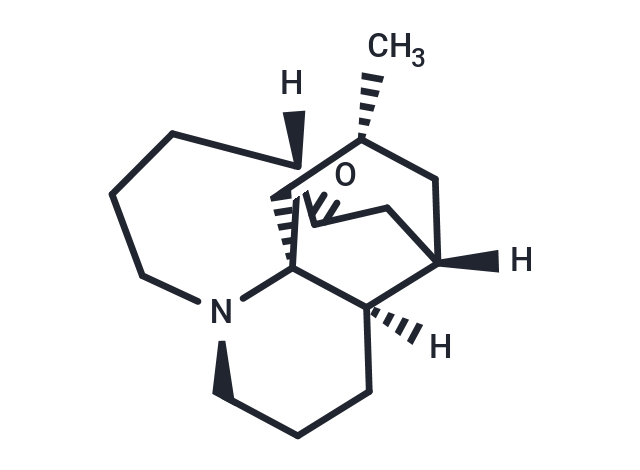Shopping Cart
- Remove All
 Your shopping cart is currently empty
Your shopping cart is currently empty

Lycopodine, a bioactive compound derived from Lycopodium clavatum spores, effectively inhibits the proliferation of HeLa cells through the induction of apoptosis. This process is mediated by caspase-3 activation. In refractory prostate cancer cells, Lycopodine triggers apoptosis by modulating 5-lipoxygenase and depolarizing the mitochondrial membrane potential, without altering p53 activity.

| Pack Size | Price | Availability | Quantity |
|---|---|---|---|
| 25 mg | Inquiry | 10-14 weeks | |
| 50 mg | Inquiry | 10-14 weeks | |
| 100 mg | Inquiry | 10-14 weeks |
| Description | Lycopodine, a bioactive compound derived from Lycopodium clavatum spores, effectively inhibits the proliferation of HeLa cells through the induction of apoptosis. This process is mediated by caspase-3 activation. In refractory prostate cancer cells, Lycopodine triggers apoptosis by modulating 5-lipoxygenase and depolarizing the mitochondrial membrane potential, without altering p53 activity. |
| In vitro | Lycopodine (100, 200 μg/mL;?24 hours) increases level of Bax and decreases the mitochondrial cytochrome c. This is followed by an increase in expression of cytochrome c in cytosolic fraction.?Lycopodine also cleaves the caspase-3 in the total cell lysate, while the expression of Bcl-2 is down regulated[2].Lycopodine (5.22-78.3 μg/mL;?12 hours) has 50% viability at 57.62±0.086 μg/mL and 51.46±1.43 μg/mL for PC3 and LnCaP, respectively[1].?Treated with Lycopodine (74-222 mM;?12 hours), the apoptotic index is with respect to the gradual increase in doses for the PC3 and LnCaP cells[1].?Lycopodine (74-222 mM;?12 hours) induces cell cycle arrest at G0/G1 phase in PC3 and LnCaP cells[1].?Lycopodine (0-200 μg/mL;?48 hours) shows cytotoxicity to HeLa cells in a dose and time dependent manner.?However, Lycopodine shows minimal cytotoxic effects in normal peripheral blood mononuclear cells (PBMC) even at the highest dose (200 μg/mL)[2]. |
| Molecular Weight | 247.38 |
| Formula | C16H25NO |
| Cas No. | 466-61-5 |
| Relative Density. | 1.106g/cm3 |
| Storage | Powder: -20°C for 3 years | In solvent: -80°C for 1 year | Shipping with blue ice. |

Copyright © 2015-2025 TargetMol Chemicals Inc. All Rights Reserved.